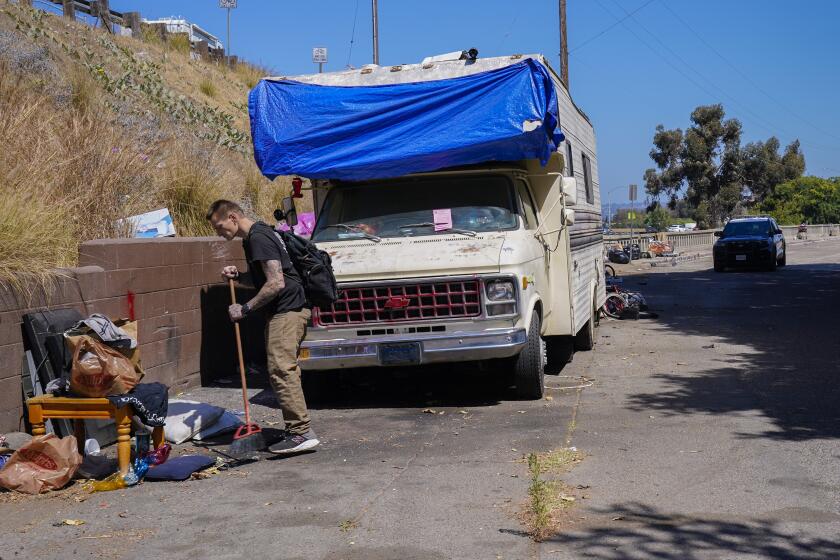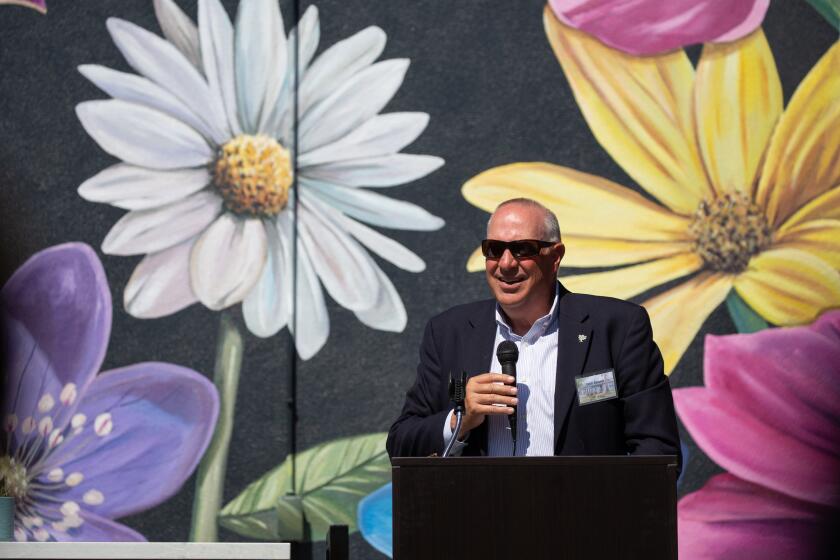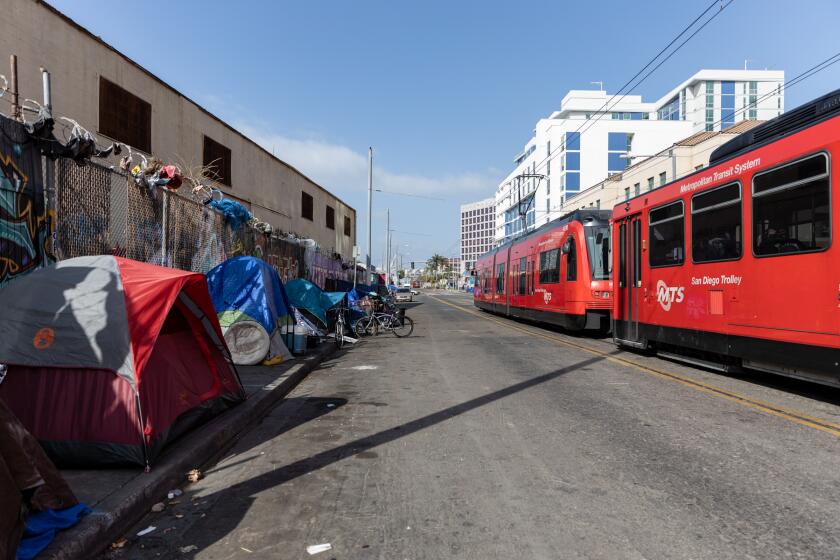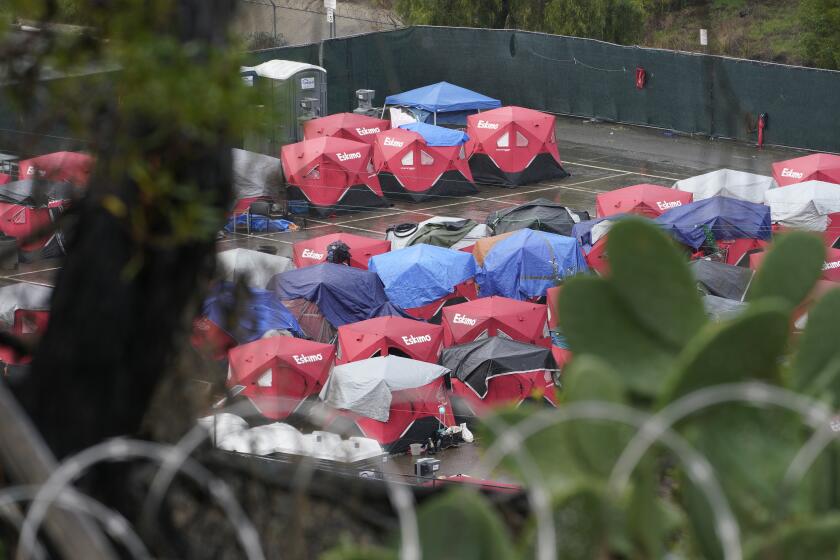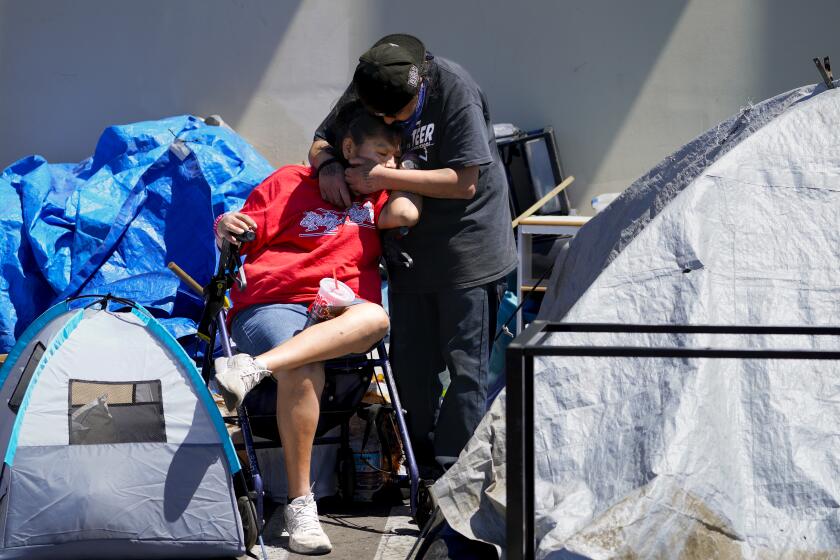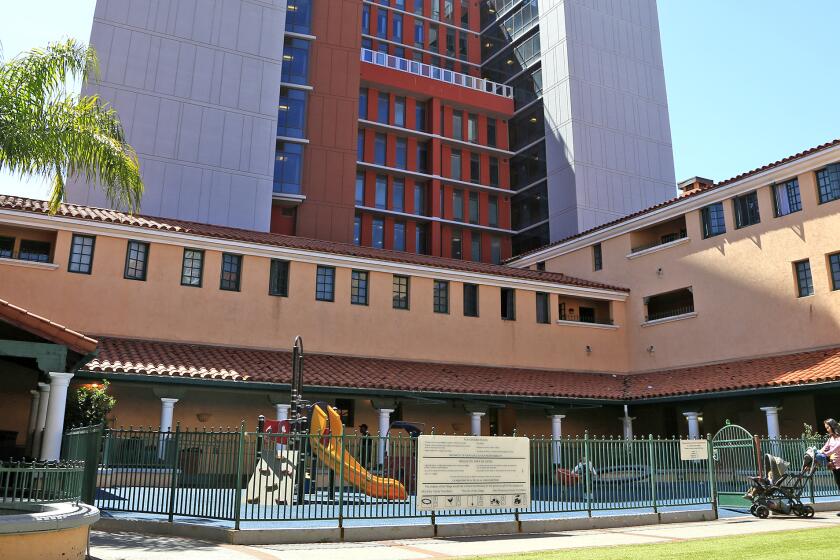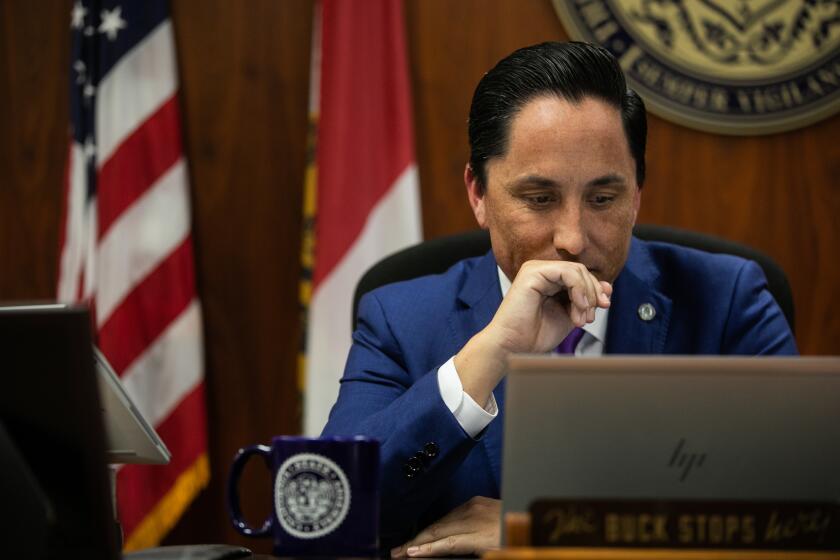County’s homeless: Disabled, 55 and older and Black
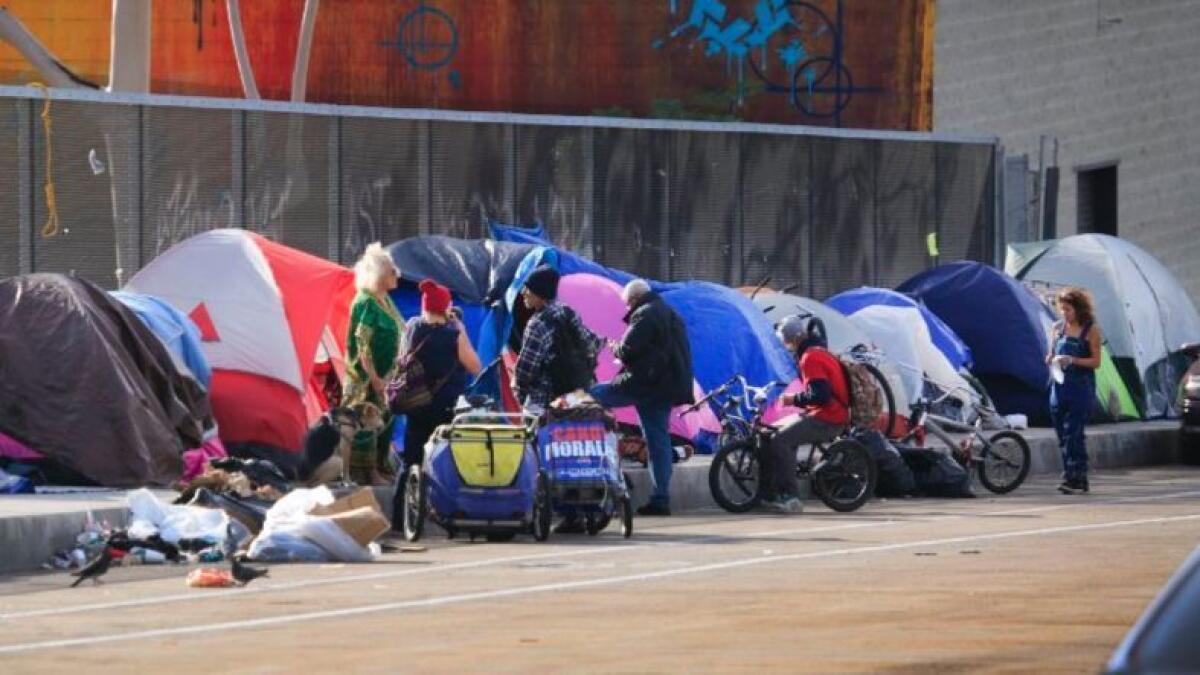
Annual count was conducted in January and included interviews with people on the street
Interviews with homeless people living outdoors throughout San Diego County revealed that many are seniors, a majority have some kind of disability and Black people are over-represented among the population.
The results come from the annual point-in-time count of homeless people in shelters and outdoors taken last January. Data from the count released in April found 7,619 people throughout the county were homeless, including 3,971 who were without shelter, an overall decrease of about 6 percent.
A report on the count released last Thursday included additional demographic information obtained from surveys conducted during the count.
Among the data new this year, surveys found 27 percent of people on the street and 24 percent in shelters were 55 years old or older. Of those seniors who were not in shelters, 55 percent said they had a physical disability, with 50 percent saying they had a chronic health condition. Of the older people on the street, 88 percent said they became homeless in San Diego County.
Data also showed that homelessness was down throughout the county except in South County, where it had increased 10.5 percent. The biggest growth was in National City, which had 125 unsheltered people for a 36.2 percent increase.
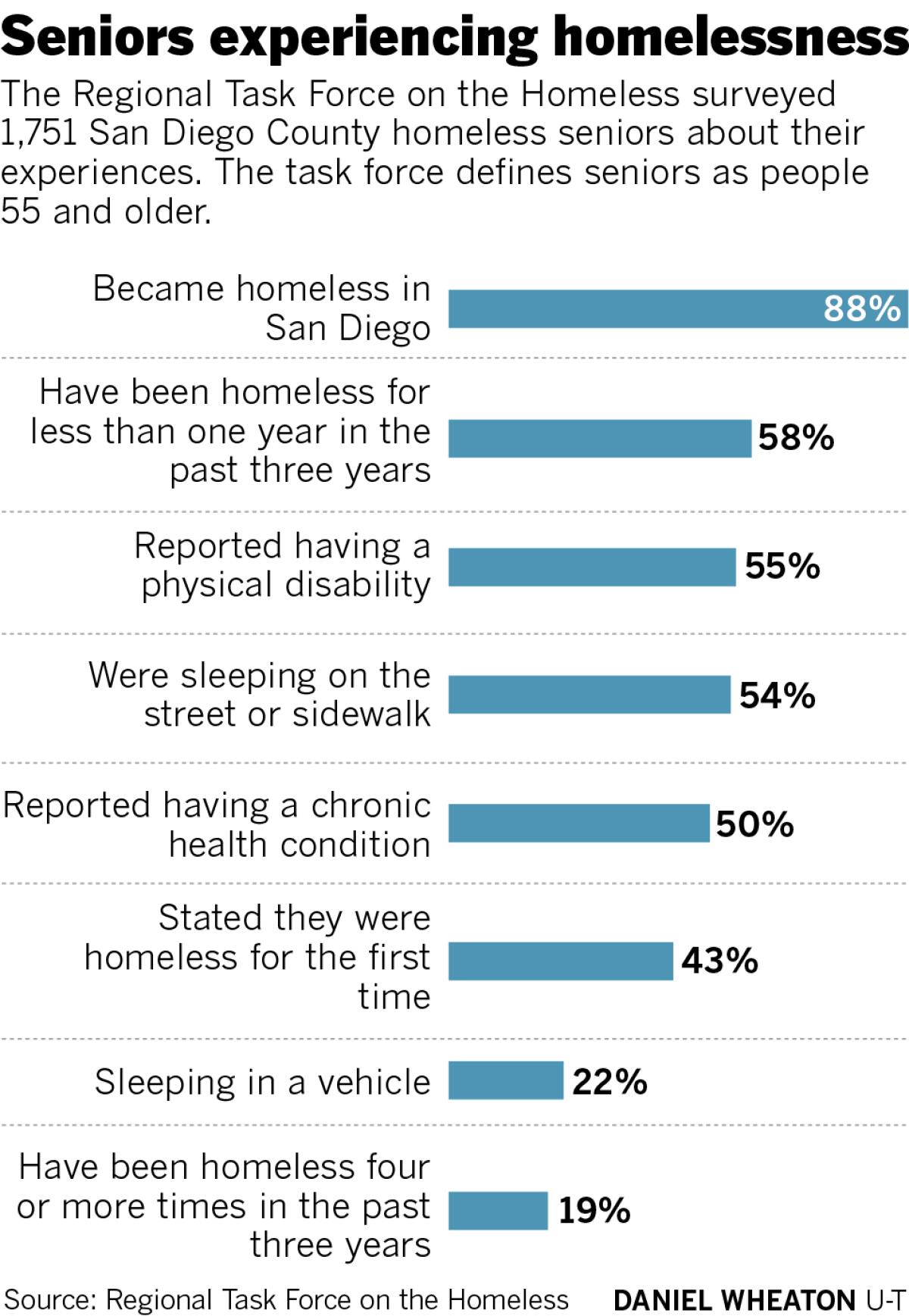
Demographics of race and ethnicity found the most striking disproportion among Black people, who make up just 4.7 percent of the county’s population but 21 percent of the homeless population.
People with disabilities also are over-represented in the homeless population. Countywide, only 10 percent of people have disabilities, while people with disabilities make up 58 percent of the homeless population.
Of those disabilities, 37 percent reported having mental health issues, 35 percent had physical problems, 32 percent had a chronic health issue and 31 percent had substance abuse problems.
The survey found the largest group of unsheltered veterans were 62 years old or older, representing 28 percent of all homeless veterans on the street.
The 297 unsheltered young people who answered the survey represented a decrease of 27 percent from the previous year, according to the report. The youths were up to 24 years old.
About 1,000 inmates in the Sheriff’s Department jail also were surveyed, and the report found 25 percent said they were homeless at the time of their arrest. Of those, 27 percent identified as Black, 37 percent said they had been homeless longer than a year and 84 percent said they became homeless in San Diego County.
While many of the numbers in the homeless count look promising for San Diego, the report also could leave one wondering if any progress made will have been lost when it is conducted again in about five months.
The count was conducted about three months before a county health order began closing businesses and activities as the first cases of the cororonavirus began appearing locally.
Since then, there was widespread concern that the virus would spread unchecked through the homeless community while more people would become homeless because they could not pay their rent or mortgage.
Neither appears to have happened so far in San Diego County, and numbers might have even decreased as more people have found housing.
Although area service providers and nonprofits such as the San Diego Food Bank have reported greater needs from the community overall, a monthly count of homeless people in downtown San Diego has shown the number of people sleeping on the street has gone down in recent months.
The Downtown San Diego Partnership count in August found 559 people on the street, among the lowest of the year. The count was 678 in July and 721 in June.
But as more months pass with people out of work because of the shutdown, the possibility of evictions and homelessness still looms. Finding a precise prediction of what will happen, however, is not easy.
Rick Gentry, President and CEO of the San Diego Housing Commission, isn’t predicting that the pandemic won’t result in more homelessness, but he is optimistic about steps that already have been made to address the possibility.
“Disruptive events create opportunities to rethink solutions fresh,” he said.
As examples, Gentry noted that Federal Housing Administration mortgage insurance, the Fannie Mae
mortgage program, the Public Housing Act and Veterans Affairs’ housing programs all were created in the 1930s in response to the Great Depression, while housing vouchers came out of the Housing Act of 1974 during that decade’s recession.
Earlier this year, officials on the local, state and national level recognized that the pandemic could lead to unemployment, which could lead to evictions and even homelessness.
In March, federal legislators passed the Coronavirus Aid, Relief, and Economic Security (CARES) Act, which included a halt to evictions and foreclosures. The Centers for Disease Control and Prevention this month extended the moratorium through Dec. 31.
In California, Gov. Gavin Newsom recently signed a bill that will prevent out-of-work Californians from being evicted through the beginning of next year, and the city of San Diego has its own ban on evictions, which lasts until Sept. 30 unless the City Council extends it.
Also helping keep people in their homes during the pandemic, the San Diego Board of Supervisors recently approved a budget that included $24 million in rental assistance.
But what happens when that money runs out and all the moratoriums on evictions and foreclosures expire? There have been some dire predictions, but even those note that only a fraction of people who are evicted become homeless.
In May, Columbia University economics professor Brendan O’Flaherty projected homelessness could increase by 40 percent to 45 percent above the numbers from January 2019, creating almost 250,000 more homeless people nationwide.
That projection was based on a model that found homelessness per 10,000 people increased by 0.65 for every one percent increase in the unemployment rate. At the time, the projected unemployed rate was about 16 percent, but the latest figures reported by the U.S. Bureau of Labor Statistics shows it at around 8.4 percent.
A 2018 report by the National Law Center on Homelessness and Poverty found there wasn’t a nationwide study that related evictions to homelessness, but did find some local studies.
The center reported that a 2017 survey found 14 percent of homeless people in Santa Cruz cited eviction as the primary cause of their homelessness while a report by the Institute for Children, Poverty, and Homelessness that year found 33 percent of families with children in New York City said they were homeless because of eviction.
The latest San Diego County survey did not ask people if they had become homeless because of evictions.
San Diego had closed its large tented homeless shelters out of fear that they were breeding grounds for the coronavirus earlier this year and moved hundreds of people to a temporary shelter at the Convention Center.
That move had a silver lining, San Diego Regional Task Force on the Homeless CEO Tamera Kohler said in a recent interview. By sheltering more than 1,000 people in one place and consolidating resources, Kohler said the effort to find housing for them has become more efficient.
Last week, the city announced it had reached a milestone by finding housing for its 500th client.
“San Diego is housing people at twice the rate we did before the pandemic, a remarkable feat and proof that we are going to keep our promise to come out of this crisis with fewer people living on our streets,” San Diego Mayor Kevin Faulconer said in a press release last week.
Gentry said the San Diego Housing Commission will meet Friday to move forward with the purchase of two hotels that will provide housing for 400 people, with those at the Convention Center the first to move in by the end of the year. Like Faulconer, Gentry said the city is on track to house more homeless people than in past years, and he credits the response to the pandemic with leading to the creation of new approaches.
Still, he has no clear prediction of how long the pandemic will last or whether it will create a surge of new homeless people. Gentry said he has to remain optimistic, and he hopes that besides government assistance, landlords will work with tenants to not evict people during the health crisis.
Get Essential San Diego, weekday mornings
Get top headlines from the Union-Tribune in your inbox weekday mornings, including top news, local, sports, business, entertainment and opinion.
You may occasionally receive promotional content from the San Diego Union-Tribune.

